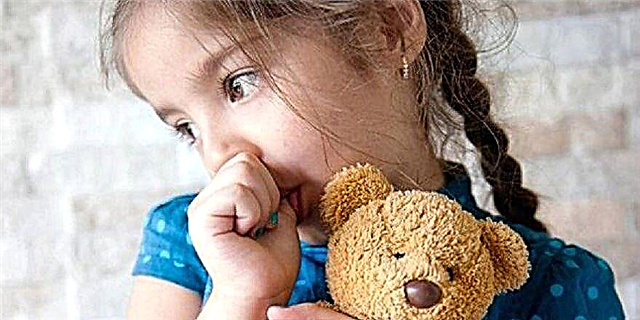
In childhood, a person can experience such ailments that are characteristic only of children, and for adults they are not dangerous. One of these diseases is scarlet fever. Yevgeny Komarovsky, an authoritative pediatrician, author of books, articles and TV programs about children's health, tells how to find it out, how to distinguish it from other infections and properly organize the treatment of a baby.

What it is
Scarlet fever is an infectious disease that is caused by group A streptococci.
A child can become infected with these hemolytic microbes in one and only way - from a person:
- if the baby was in contact with someonewho are sick with angina or streptococcal pharyngitis, especially at the initial stage of the disease,
- if he communicated with a person who recovered from scarlet fever not so long ago - not even three weeks have passed since the recovery.


In addition, there are perfectly healthy people, including adults, who are carriers of streptococcus A. They may not even guess about it, because they themselves do not get sick, but they regularly release microbes into the environment. There are not so few such people as it seems. According to estimates of infectious disease specialists, carriers of streptococcus A on the planet are about 15% of the total adult population.
Children's immunity is weaker than an adult, which is why adults do not get sick with scarlet fever, because they have acquired immunity to streptococci. The child does not have such protection. The only exceptions are babies under one year old - they have congenital, received from the mother, anti-toxic immunity. Therefore, scarlet fever in children of the first year of life is an extremely rare phenomenon.

The rest of the children, up to 16 years old, are at risk. When communicating with someone from the above groups (recovered, sick or carriers), when sharing toys, household items, airborne droplets or contact, infection occurs.
It is this insidious microbe (do not confuse it with all streptococci, because there are many of them), getting into the child's body, begins to secrete a strong poison called erythrotoxin. The body reacts violently to it, which causes the symptoms of the disease. The incubation period lasts from one day to 12 days. For habitation and reproduction, streptococcus A selects the mucous membranes of the tonsils.
Due to erythrotoxin, which stains the tonsils in bright red color, the disease has a second name - purple fever.

Symptoms
Scarlet fever always begins acutely:
- body temperature rises sharply;
- severe sore throat appears;
- the tonsils, larynx and tongue have a scarlet, very bright color. Fragments of purulent plaque may be observed on the tonsils. On the 3-4 day, granular formations become noticeable on the tongue;
- the body reacts to a strong toxin produced by Streptococcus A, a rash. It appears almost immediately after the onset of the disease.
This last feature is considered to be the most characteristic. You should learn more about it. On the already reddened skin, small red dots appear, which, in terms of the severity of color, are brighter, they are not difficult to see in all details. The rash spreads quickly until it covers the entire body of the child. Most of all red specks are on the sides, on the bends of the arms and legs. The skin becomes dry and rough to the touch, like textured cardboard.

Scarlet fever is not difficult to suspect even at one glance at the baby's face: bright red cheeks with a rash, the same forehead. At the same time, there is a completely clean and pale nasolabial triangle. After 7-10 days, the skin affected by the rash begins to peel off strongly. After the first week of illness, the rash usually begins to disappear; it does not leave marks on the skin, age spots and scars. Peeling usually stops 14 days after the onset of the disease.

Treatment
Despite the fact that scarlet fever has been known to doctors for a very long time, in ancient times, doctors often confused it with measles and rubella. But if viral rubella and measles do not need any specific drug treatment, then with scarlet fever, the use of antibiotics is indicated. Therefore, before the advent of antibacterial drugs, scarlet fever was often fatal.
Today, doctors are divided into two "camps": some believe that successful prognosis in the treatment of scarlet fever became possible thanks to the invention of antibiotics, others claim that a general improvement in the quality of life and nutrition of children played a role. Yevgeniy Komarovsky is confident that deaths from scarlet fever have decreased due to both reasons.
Streptococcus A is very sensitive to antibiotics, so it is quite easy to deal with it. Treatment is usually prescribed at home, only very young patients who are not 2-3 years old can be sent to an infectious diseases hospital, and children with a complicated form of scarlet fever, when there is a risk of damage to internal organs by hemolytic streptococcus.

The general rules of treatment are as follows:
- bed rest until the temperature drops and the signs of intoxication disappear;
- plentiful warm drinks (juices, tea, fruit drinks, compotes). It is not recommended to give milk;
- diet (according to Pevzner's method, the so-called table number 2). Food should be given in a mashed, mushy state, soups, semi-liquid purees are welcome;
- antibiotic therapy.
Most often, children are prescribed antibacterial agents of the penicillin group. These antibiotics do an excellent job with the causative agent of scarlet fever, and after 12 hours (maximum one day) after the start of taking the drugs, the child becomes much better. If the baby has a penicillin intolerance, other antibiotics may be prescribed for him - almost all existing groups of these drugs are quite effective against streptococcus A.

It is not at all necessary to inject the child with injections, it is quite enough to drink a course of antibiotics in tablets, says Komarovsky. The most commonly prescribed drugs are "Amoxicillin" and "Retarpen"... In case of a severe course of the disease in a hospital, the child will additionally be given droppers with hemodez to reduce intoxication.

Yevgeny Komarovsky claims that with the timely use of antibiotics, scarlet fever can almost always be defeated without serious complications. In the absence of adequate treatment or attempts by parents to treat the child with folk remedies, severe complications almost always occur, such as rheumatism of the heart, kidney damage (glomerulonephritis).

Prevention
Scarlet fever normally cannot get sick two or three times in life. After an infection, the body develops lifelong immunity to a specific type of streptococcus. But this does not mean that the child cannot then get sick with any other streptococcal infection.
Repeated scarlet fever is rare. Usually this becomes possible if antibiotics in the treatment of the first ailment acted too quickly, the microbe was destroyed before the immunity formed specific antibodies to it. Also, a recurrence of the disease can happen in children with severely weakened immunity. A secondary infection should be treated in the same way as the primary one, however, the doctor will have to choose a different antibiotic for this.
There is no vaccine against scarlet fever. After identifying a sick child, the children's team is quarantined for 7 days.

Doctor Komarovsky's advice
Several important recommendations, which, according to Komarovsky, will help to quickly cure scarlet fever and avoid complications:
- treatment should not be stopped at the first sign of improvement... The course of treatment must be strictly observed and must be completed;
- scarlet fever is contagious, but with the timely use of antibiotics, the child ceases to be dangerous to others already on the 2-3 day of antibiotic therapy. Usually the patient is isolated for at least 10 days. After that, you can walk, but for this it is better to choose places where the child will not be able to contact other children. Such a restriction must be withstood at least 3 weeks after the onset of the disease. To the kindergarten - in 22 days;
- if there are several children in the family, and one of them fell ill with scarlet fever, the rest should be taken to the clinic and taken from the pharynx culture for the presence of a microbe... If it is not identified, children can attend their kindergartens and schools. If they find out, treatment and quarantine will be assigned to them. In any case, a sick child must be isolated from brothers and sisters.

In the video below, Dr. Komarovsky reveals some of the details of this disease.



